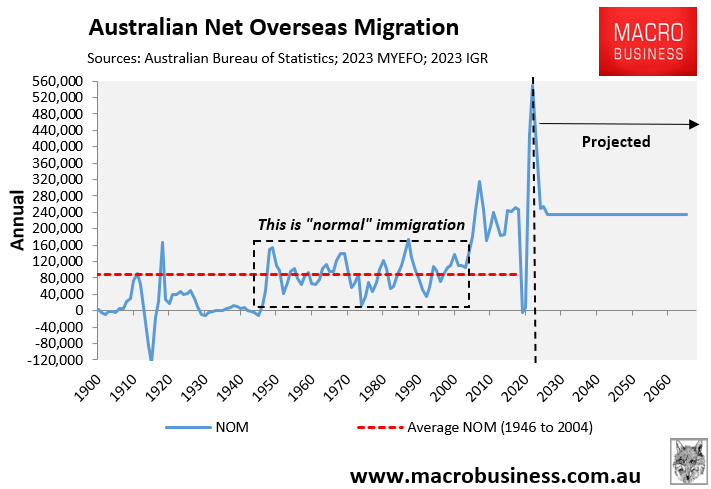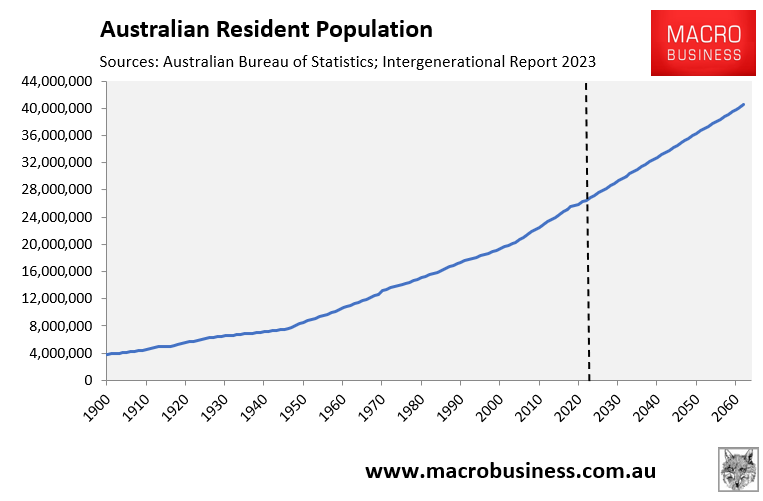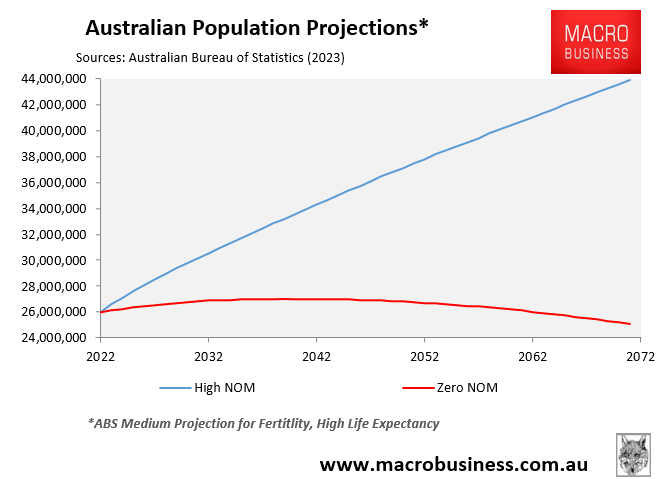The ABC’s Gareth Hutchens published an article explaining the incompatibility between Australia’s growing population and reducing its carbon emissions.
Hutchens quoted remarks from a Lancet study into global fertility rates published this year, which notes that lower population growth would assist the world in reducing its carbon footprint.
“A 2012 study suggests that if global population were to follow a low-growth rather than a medium-growth path, worldwide carbon emissions would be 15% lower by 2050 and 40% lower by 2100”.
“The 2023 Intergovernmental Panel on Climate Change (IPCC) report likewise suggests that low population growth (a result of low fertility) is an important factor in limiting global warming”.
Hutchens also cites a range of other studies and commentary, suggesting that Australia has already exceeded its carrying capacity.
Meanwhile, urban planning expert Professor Sarah Bekessy warned that the new found desire of state governments to house people in high-rise risks driving up energy use and negatively impacting people, the climate, and wildlife.
“I realise the need to have more houses, but I think we’re just making big errors in not considering biodiversity in nature as part of our decision-making process”, she said.
Bekessy added that having less green space leads to heat islands and hotter cities.
Concrete, asphalt, and roofing all absorb solar radiation, raising the temperature and keeping dwellings hotter at night, resulting in greater energy costs as we struggle to control the temperature inside.
“For a long time now, we’ve known that cities are going to be sweltering hell holes under climate change unless we get real about having a proper urban forest. It’s such a backward step to say that we can now get rid of everyone’s backyards for housing”, she said.
Let’s get real: Australia has zero chance of meeting its emissions targets so long as its population keeps growing like a lab experiment via mass immigration.

Australia’s population has already grown by an insane 8.5 million people this century and is projected to grow by another 13 million people by 2063:

All of this population increase will come from net overseas migration:

High levels of immigration is linked to higher greenhouse gas emissions due to the increased economic activity required to accommodate the larger population.
This is true for almost all goods and services, as they all require fossil fuel energy.
For example, for every 100,000 new arrivals, expect 70,000 more cars on the road. Given our migrant’s lower pay profile, they won’t be driving expensive EVs either (which are environmentally questionable anyway), much to the dismay of wealthy inner-city Teals and Greens.
No, they are more likely to drive older, high-emission vehicles because that is what they can afford.
Building construction, operation, and maintenance alone accounts for roughly one-quarter of Australia’s greenhouse gas emissions.
The addition of 13 million people projected by the 2023 Intergenerational Report will require at least 5.5 million homes to be built (accounting for demolitions and second homes), millions of extra motor vehicles, and massive amounts of infrastructure (including water desalination plants).
This population expansion will also result in the bulldozing and paving over of hundreds of thousands of hectares of Australia’s best farmland.
Australia’s projected population increase is massive. So too are the negative environmental impacts.
In this regard, the Albanese government’s target of cutting Australia’s carbon emissions by 43% in 2030 compared to 2005 as part of a transition to “net zero” emissions by 2050 is pure fantasy.
If “net zero” was truly the goal, the federal government would adopt a stable population policy.

